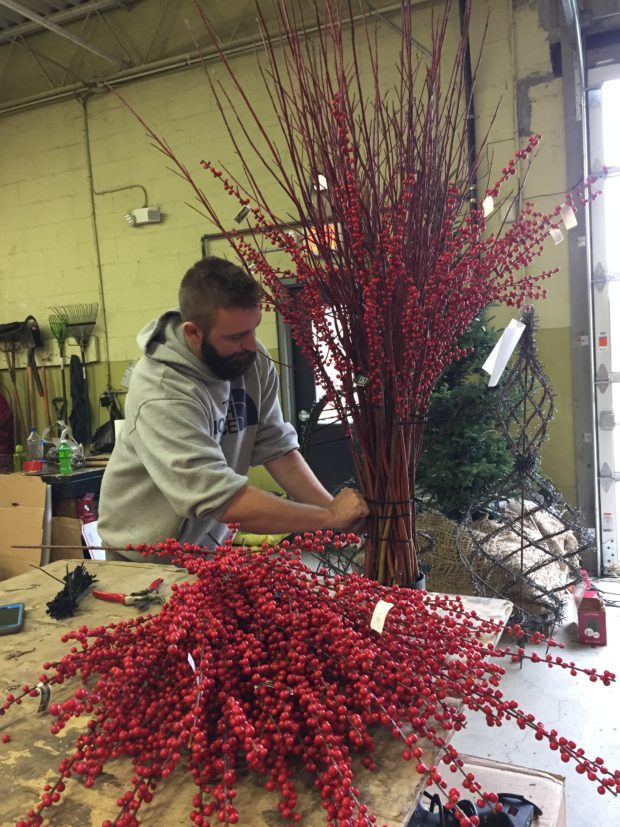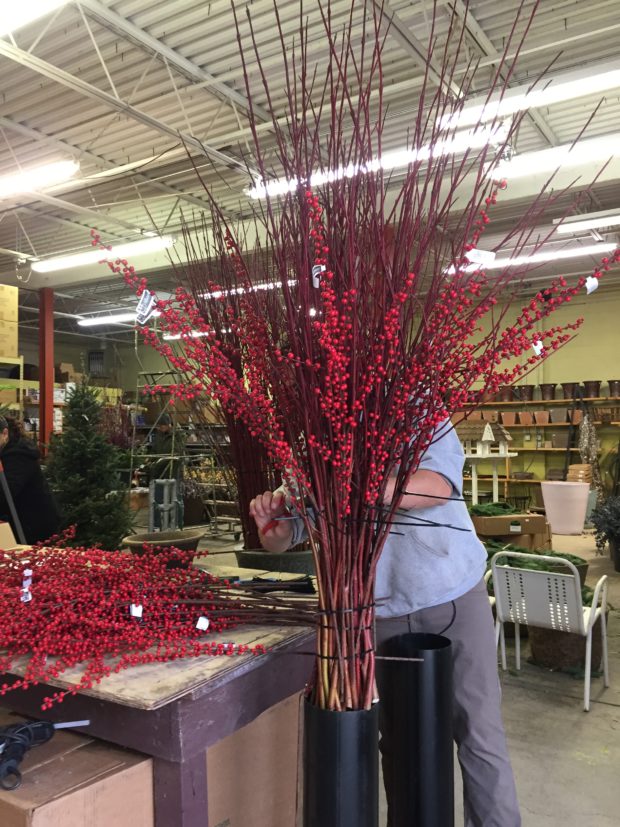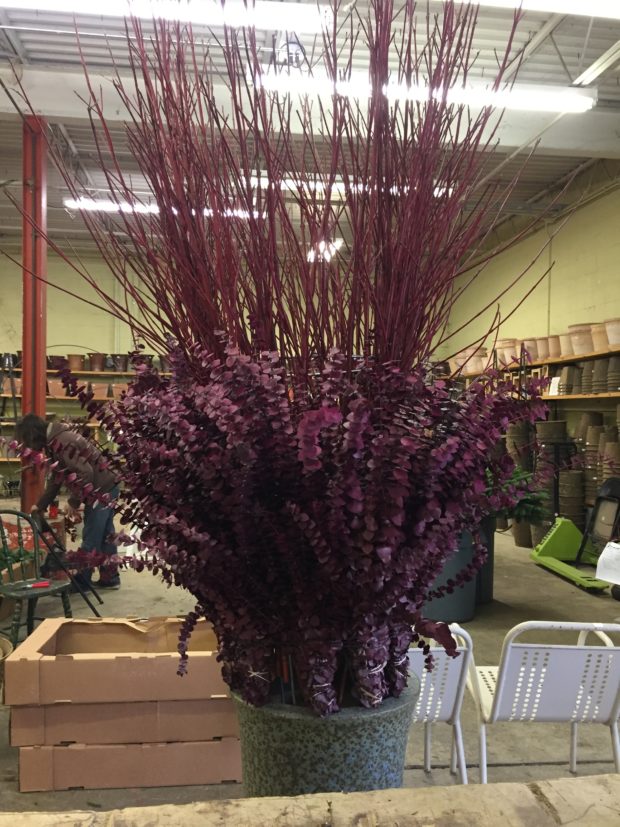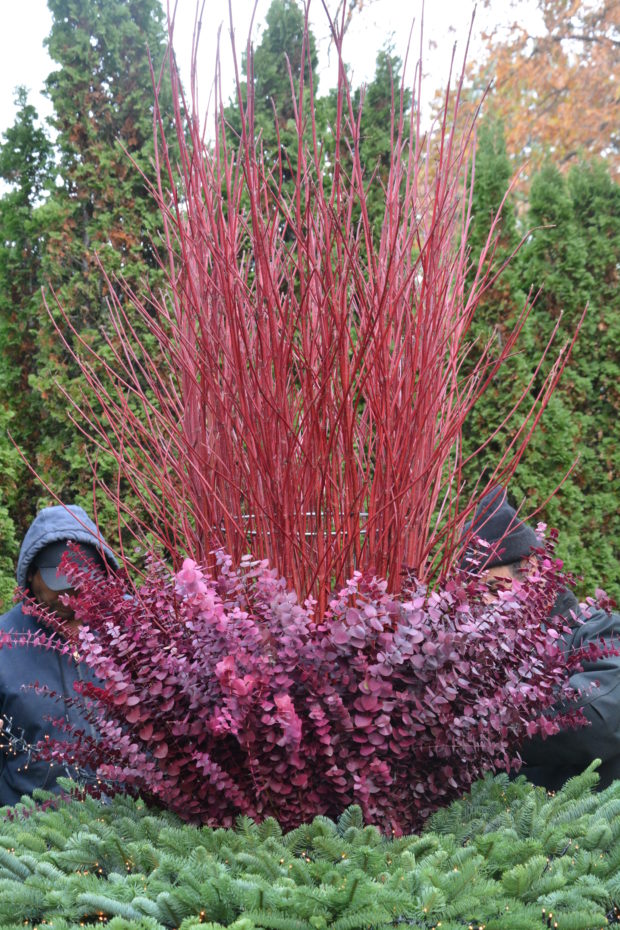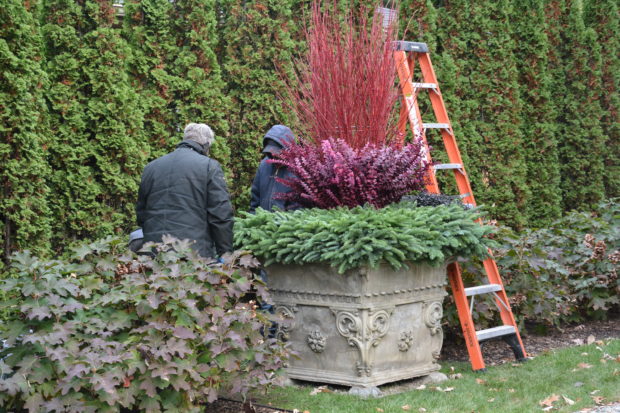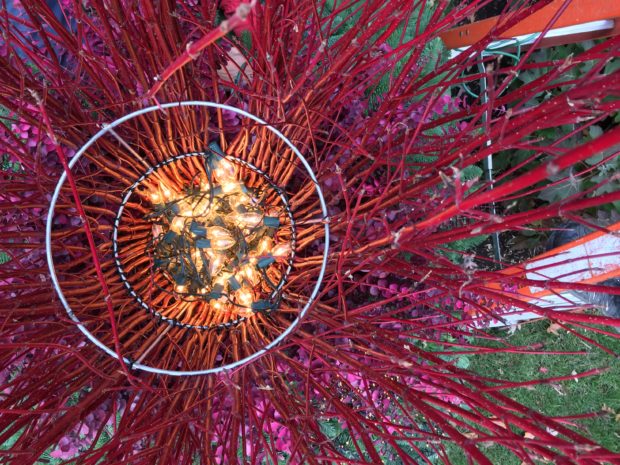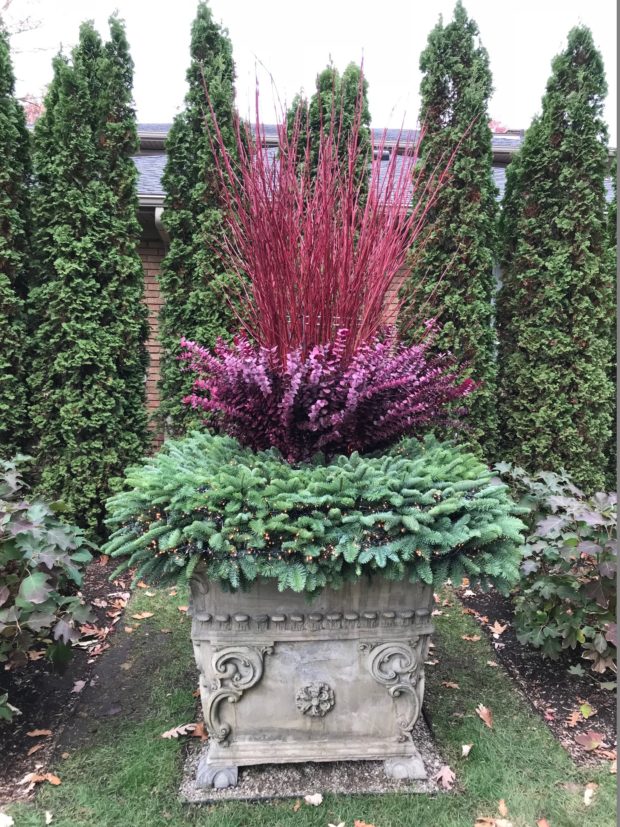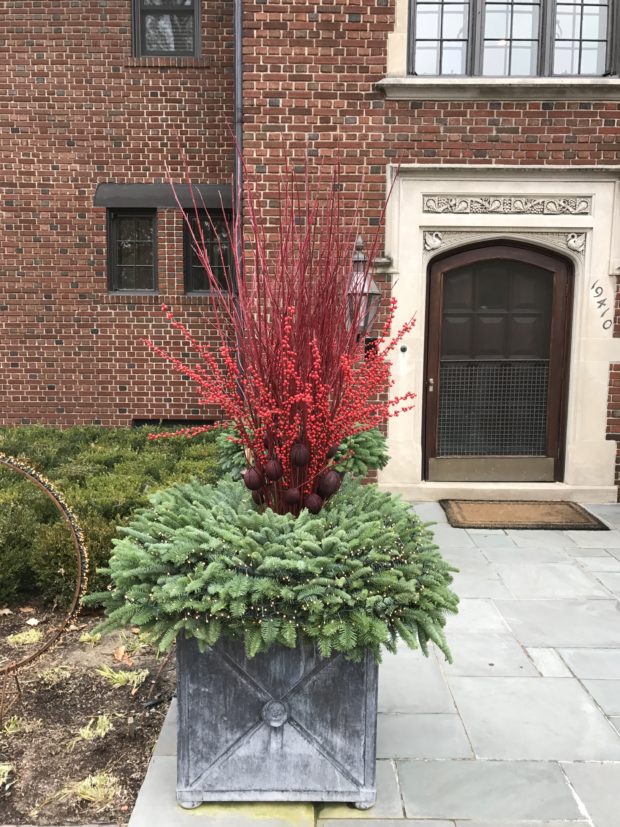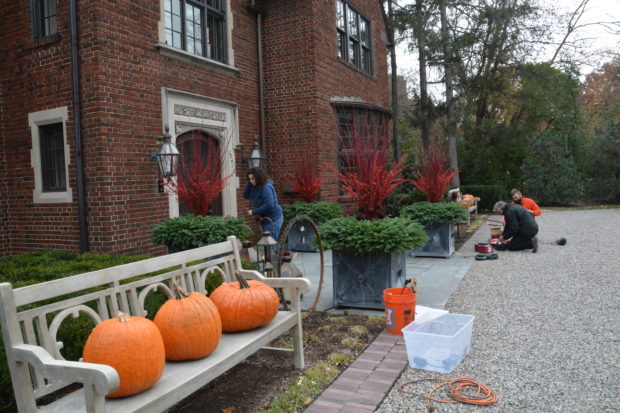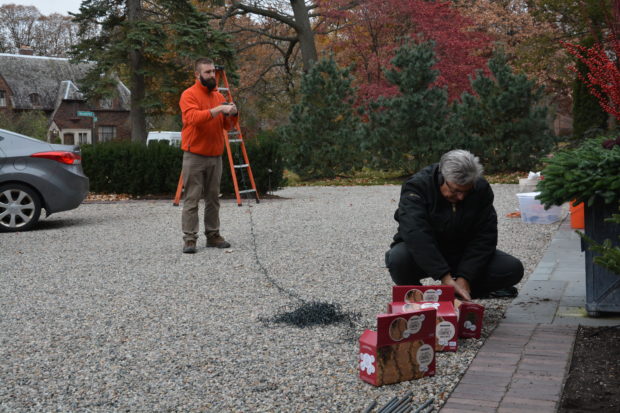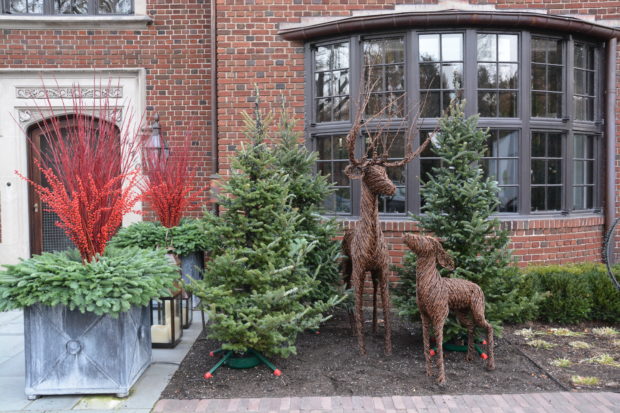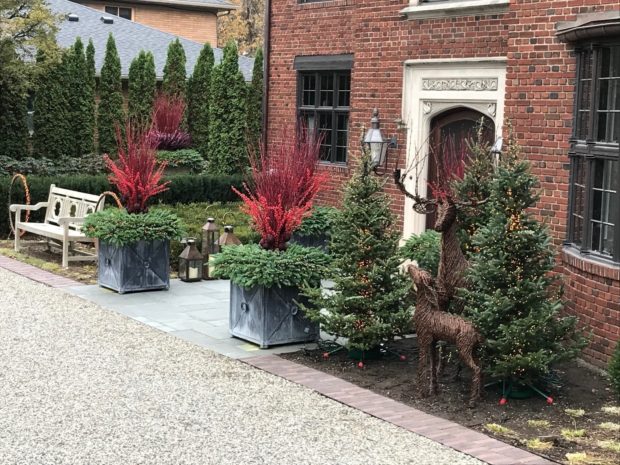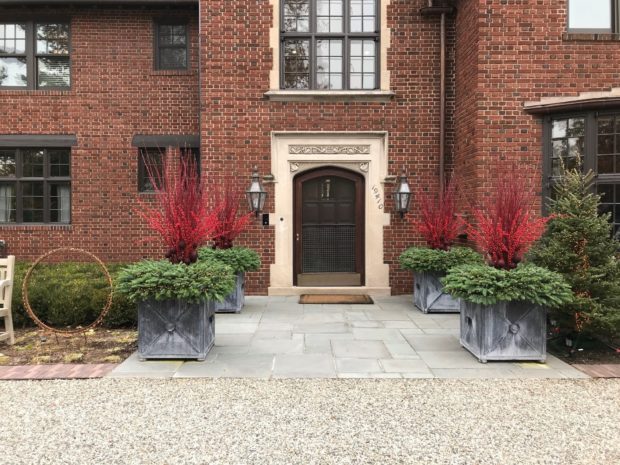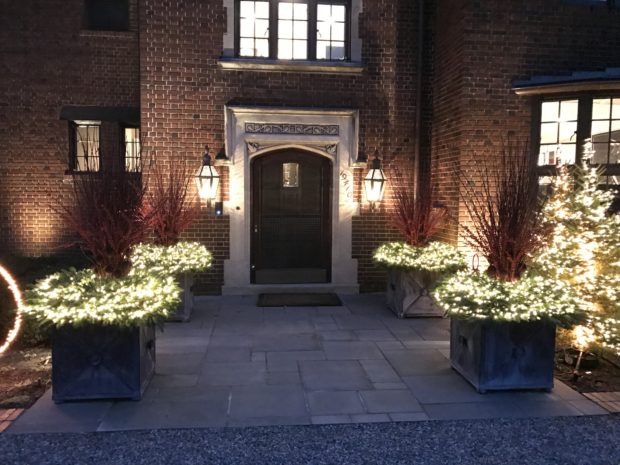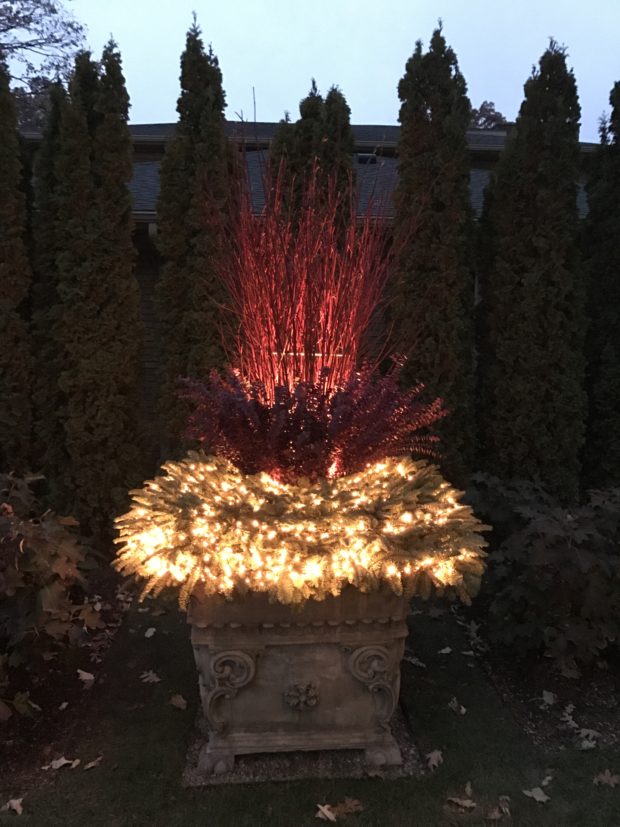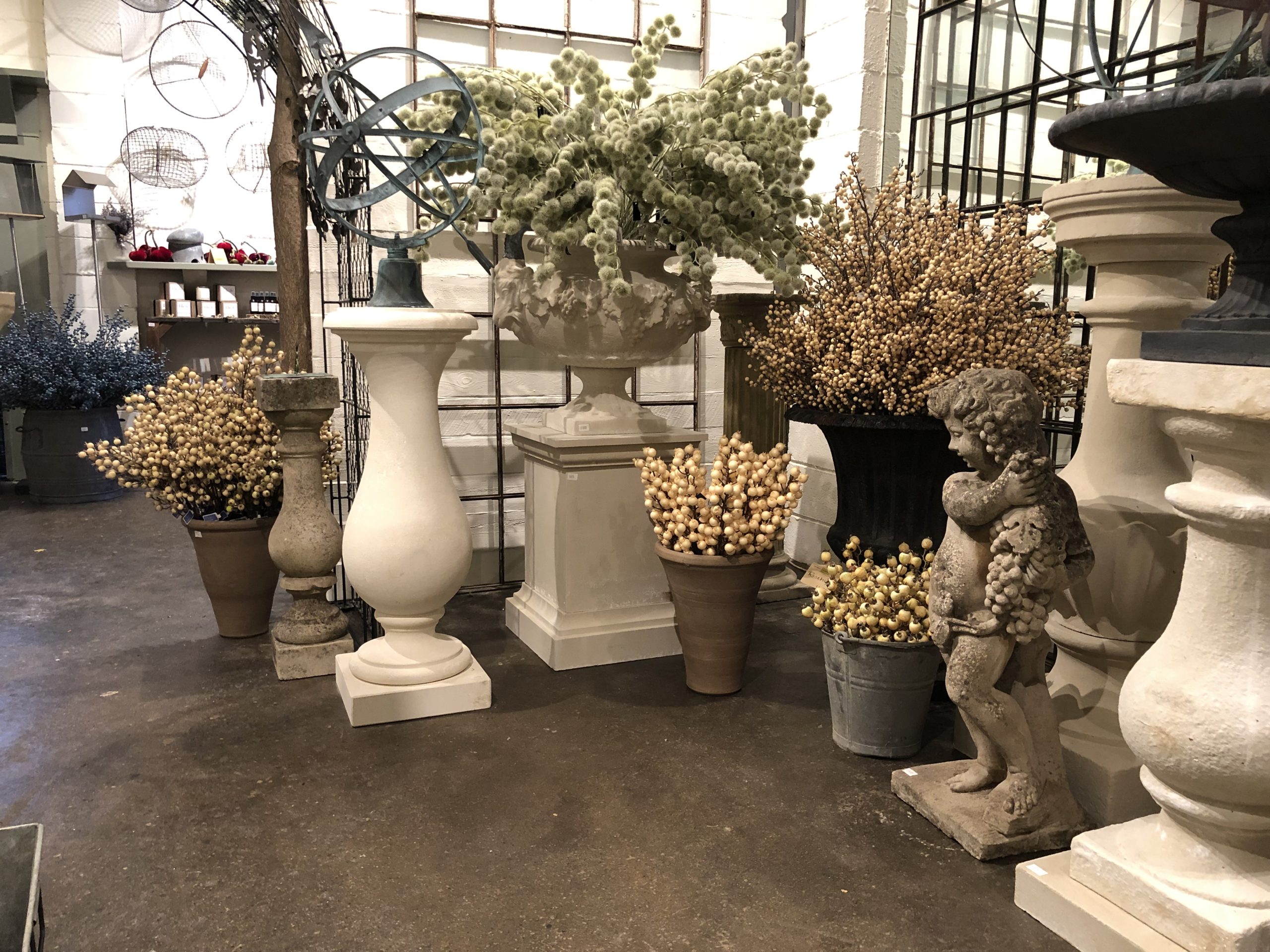
Amassing a collection of beautiful materials for winter and holiday containers and home decor at our place usually begins at least a year in advance of the season in question. Behind the scenes, ideas are tested, and those great ideas become prototypes. Orders are placed from the prototypes, and manufacturing is based on orders taken by the manufacturer’s reps from shop owners like us. This is a highly simplified sentence describing a very complicated and labor intensive process known as commerce. The big idea is that any gardener wishing to persist gardening into our winter season will have the materials to do so. This means potted hellebores and cyclamen, and a substantial variety of amaryllis bulbs. It also means fresh cut branches, mostly dogwood and willow. But the floral picks, the likes of which are pictured above, make it possible to create winter arrangements for containers. Pots placed on a front porch or at a side door asked to be filled, no matter the season.

Rob handles all of the buying for Detroit Garden Works, and he buys beautifully. Everything he purchases for his seasonal collections bear witness to his astonishing eye for fine design, beauty, utility, and serendipity. There may be those who would suggest that seasonal containers and decor have little to nothing to do with the garden or the landscape, but I disagree. The process of designing/creating and fabricating winter and holiday containers has everything to do with a need for an individual expression of appreciation of the beauty of nature. Creating winter container gardens have their roots in the living landscape, and those who garden with a passion – no matter what materials are chosen. Rob makes sure every gardener so inclined to garden on through and past the holiday and winter season has plenty of materials available to express that inclination in beautiful detail. If you shop at Detroit Garden Works, you can take your pick.
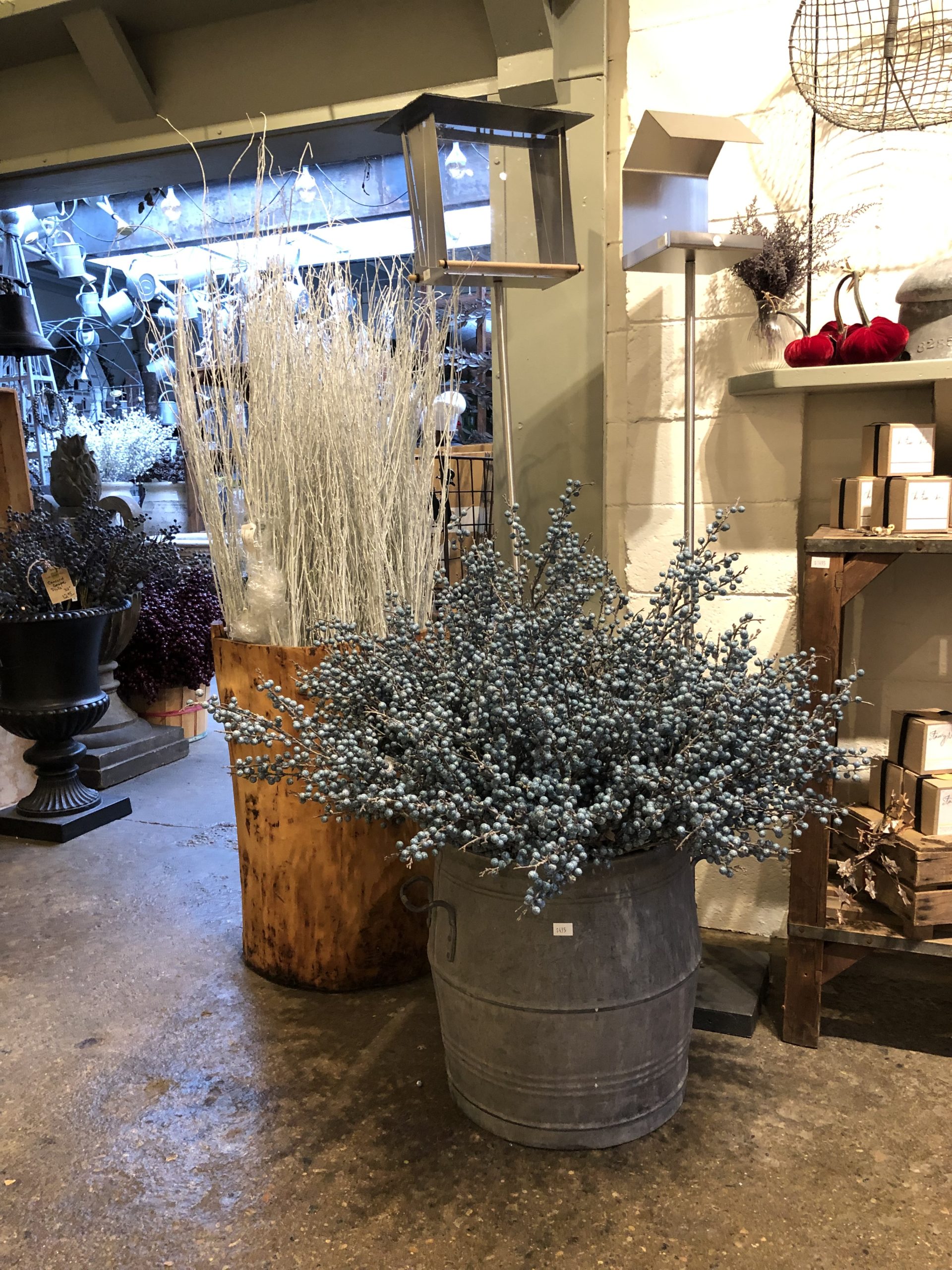
Rob’s work as a buyer has been defined by his travel both in the US and abroad – for decades. The event of the past two years made it all but impossible to travel to shop anywhere in person. But the steady and sincere relationships that he developed over the years with suppliers, product reps and manufacturers was the saving grace of this winter season. Rob was able to shop person to person, door to door, and from one continent to the next – over the phone, and via email. Amazing, this. Most all of our materials came late, and some materials never materialized. But what we have available now is terrific. As in lots and lots. By and large, this is the most product rich winter season we have ever had.
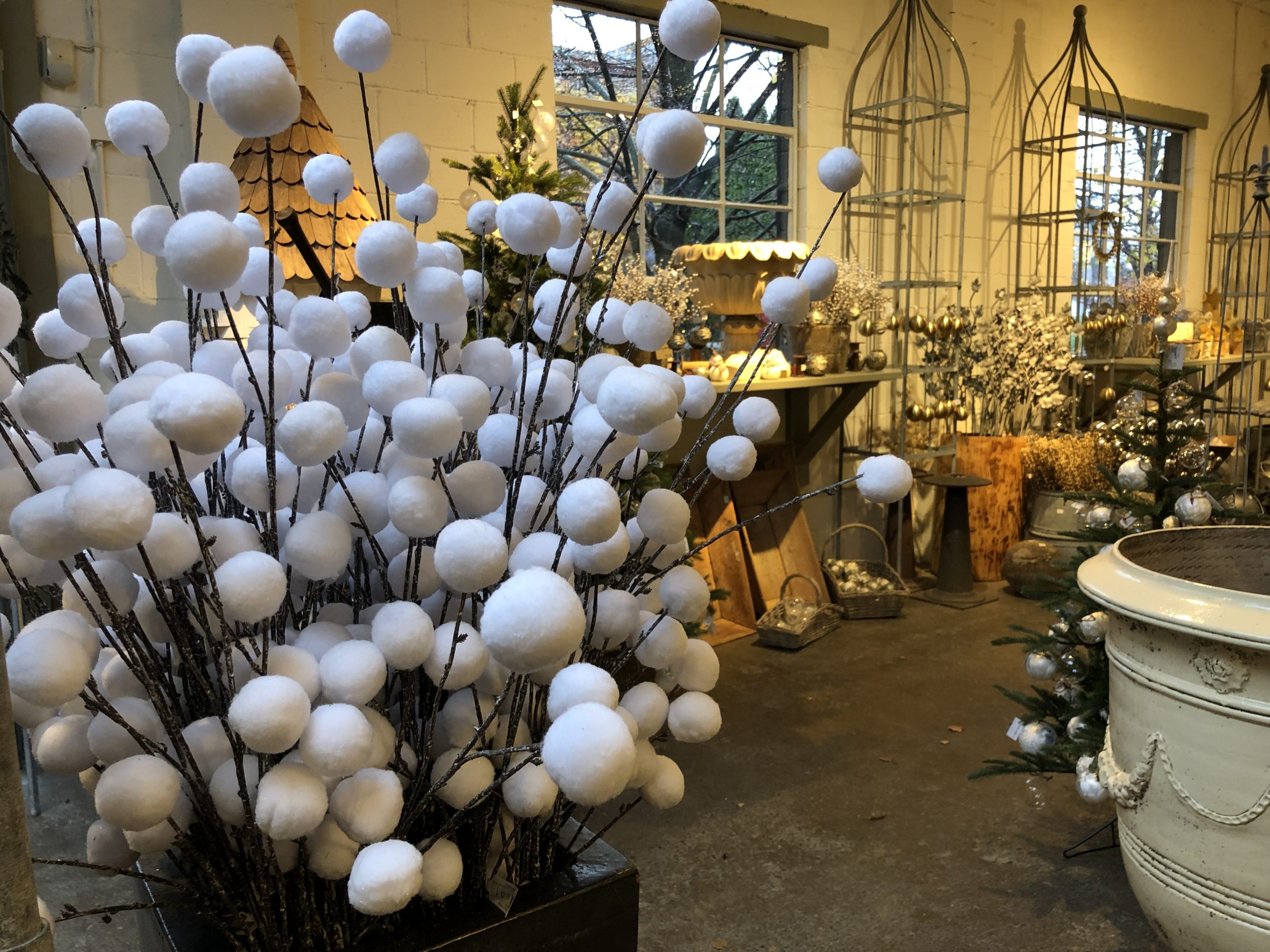 Ordering materials for containers on line or from a print catalogue is incredibly difficult. I have tried it, and I have had plenty of materials delivered that were not great. As in, did I buy this, no kidding??? I have tried to avoid shopping on line. I shopped the holiday and winter materials in person with Rob for 5 or 6 years. I liked being able to hold a pick in my hand. I could see the color. I could assess what its durability would be in a container. I could see the finished height-and the width. I could see how it would read. I could see how the shape, mass, and color would work with other elements under consideration. I could see what picks would be investment caliber, and which would be a one season fling. My shopping days are over now. I am happy to turn over the shopping for the winter season materials to Rob and Sunne. I have confidence that their choices will work for a wide range of my projects. And I respect and am intrigued by what materials they chooses from their own individual aesthetic. It is up to me to put what they buy together in such a way that my clients feel their taste is represented. If you are thinking that my design for holiday and winter container arrangements is fueled by beautiful materials- you are right.
Ordering materials for containers on line or from a print catalogue is incredibly difficult. I have tried it, and I have had plenty of materials delivered that were not great. As in, did I buy this, no kidding??? I have tried to avoid shopping on line. I shopped the holiday and winter materials in person with Rob for 5 or 6 years. I liked being able to hold a pick in my hand. I could see the color. I could assess what its durability would be in a container. I could see the finished height-and the width. I could see how it would read. I could see how the shape, mass, and color would work with other elements under consideration. I could see what picks would be investment caliber, and which would be a one season fling. My shopping days are over now. I am happy to turn over the shopping for the winter season materials to Rob and Sunne. I have confidence that their choices will work for a wide range of my projects. And I respect and am intrigued by what materials they chooses from their own individual aesthetic. It is up to me to put what they buy together in such a way that my clients feel their taste is represented. If you are thinking that my design for holiday and winter container arrangements is fueled by beautiful materials- you are right.
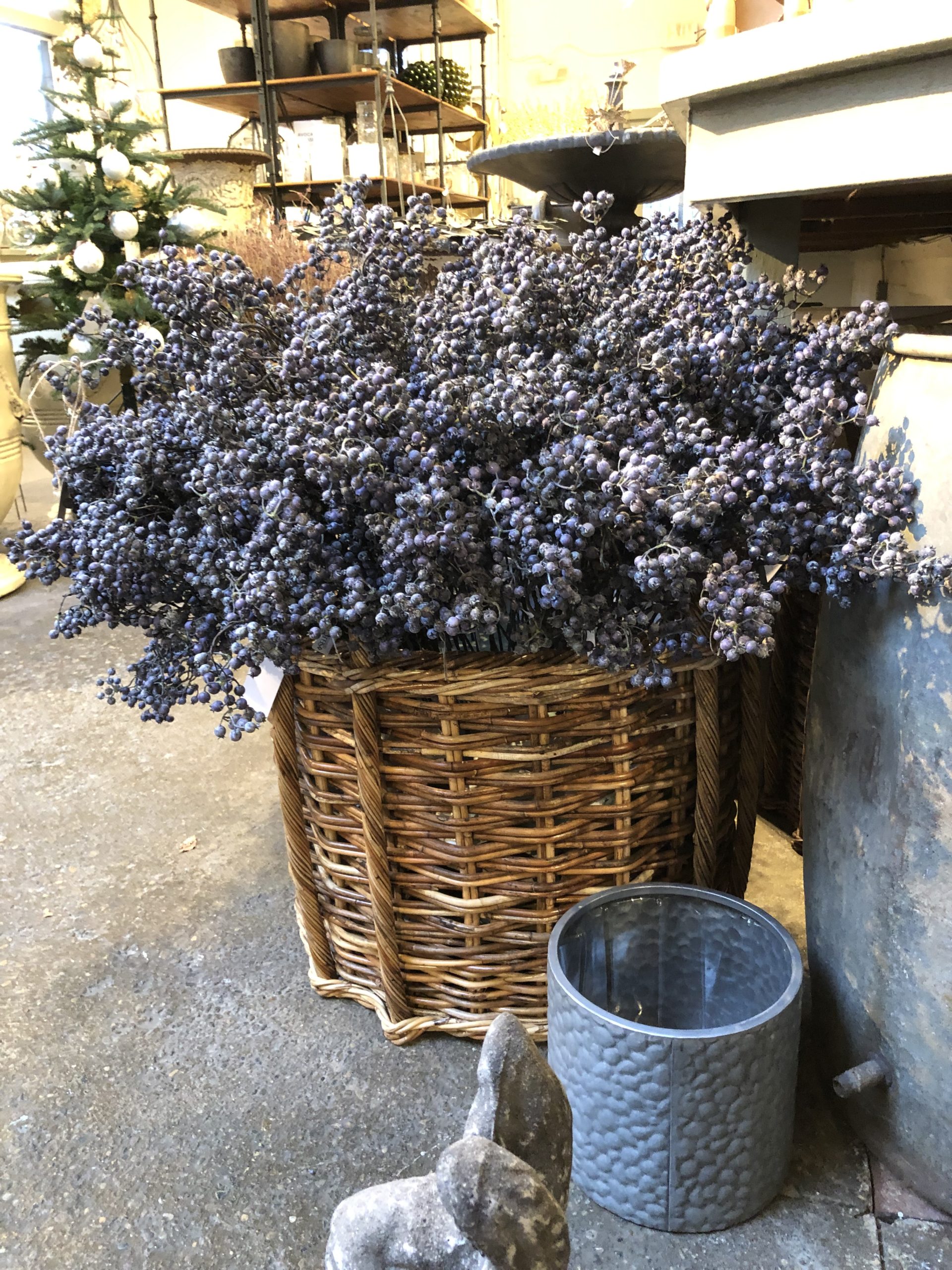
In person buying was not possible in January of 2021, so Rob did the next best thing. He bought very long and very wide. He bought what seemed perfect and appropriate, and he also bought unusual materials. Everything he spoke for he hoped would be great. That is how he works. He crossed his heart and hoped to die. OK, just kidding – but how he buys is a serious business. Consider this. There are numbers of blueberry picks from his buying from which to choose-each one different. Some capture the texture and the color of blueberries honestly. Other picks describe the color of blueberries in more poetic ways. Deep purple muscadine grape berries, or blue speckled bird egg berries. Some picks are spare. A few berries sparsely populate long stems. Still other blueberry picks feature berries that are short and chubby and not at all like how blueberries grow. It is astonishing how realistic some faux materials can be now. But the idea is not to attempt to reproduce nature. That is not possible. The purpose of the materials is to allow gardeners to create seasonal arrangements that represent their individual interpretation of nature and its forms. The intent is not to fool the eye, but rather to appeal to one’s love of the garden.
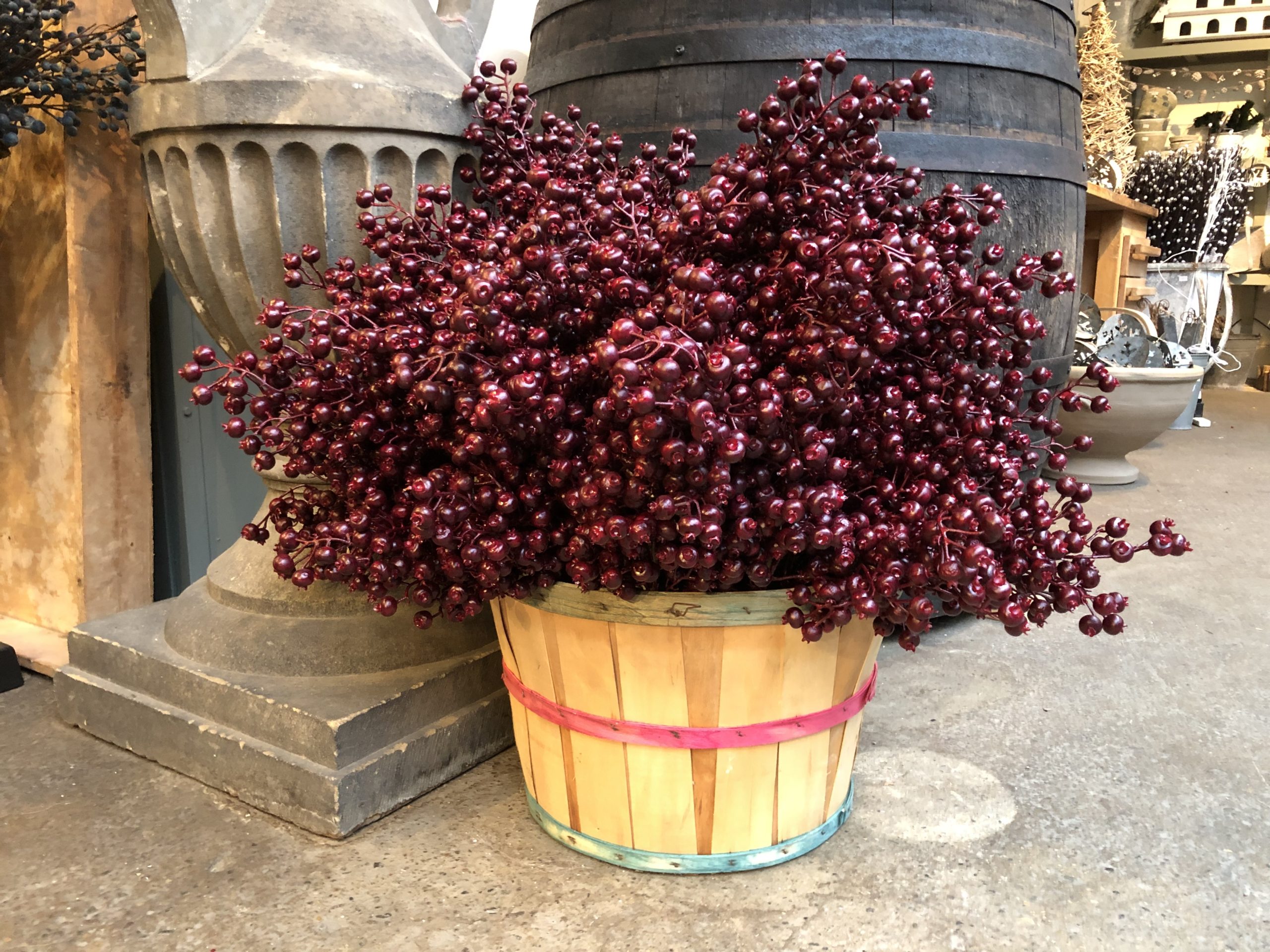
These chubby wine red berry stems do not replicate any plant that I know of. But they are indeed reminiscent of the bounty and largess of nature. They would be beautiful, paired with pale sage green picks. Or noble fir. They would be lovely, encircling a stand of pussy willow stems. They would provide a rich and warm addition, punctuating a fresh evergreen garland. They are the berries-ha. They represent the lush scenes in the garden of my imagination. You get the idea.
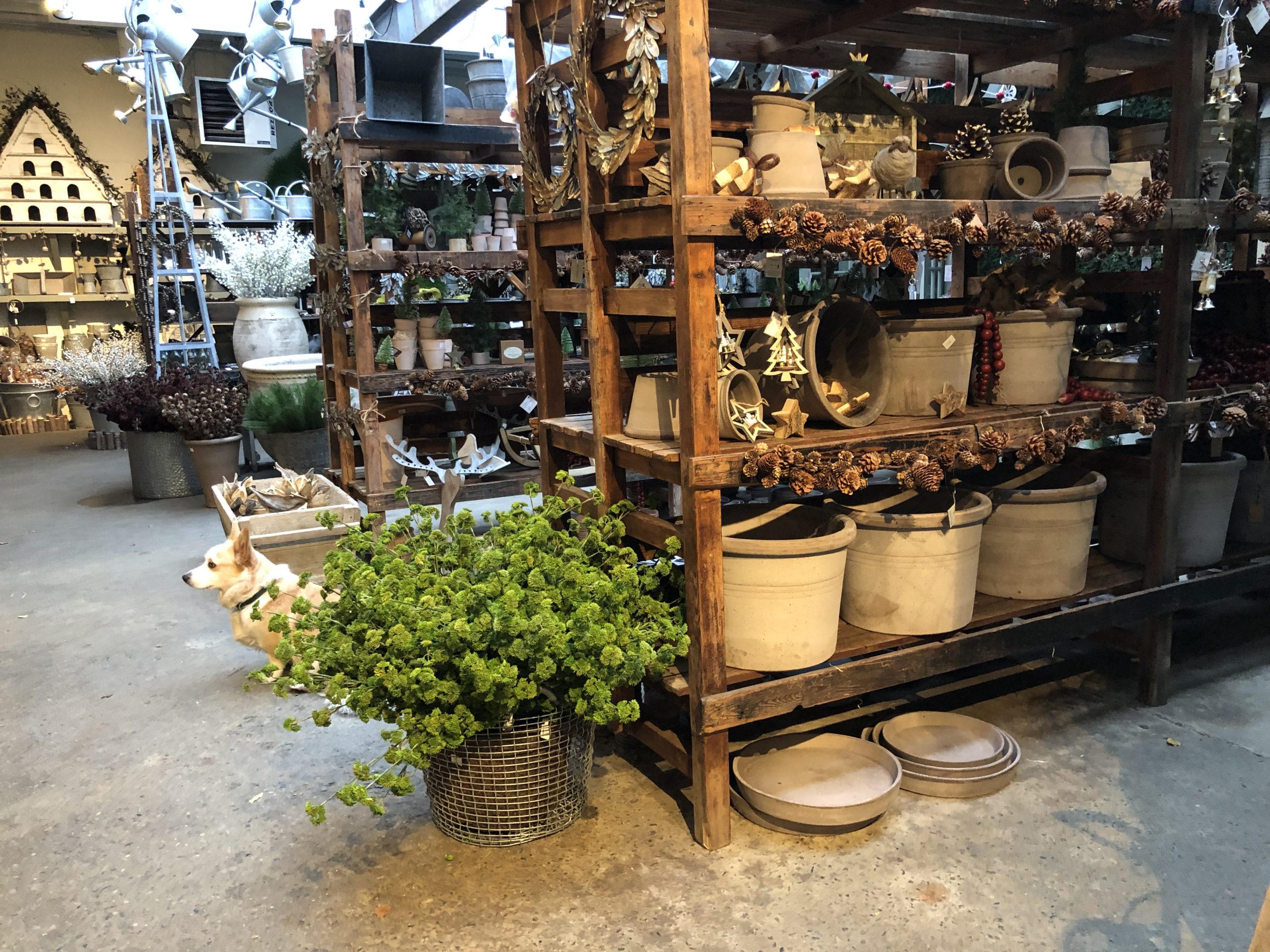
Good looking and good quality materials can suggest a scheme for an arrangement. These picks have the lush green color and texture of broccoli. The stems look good enough to eat. Some winter arrangements do indeed have the aura of a feast, at a time when the landscape provides only the barest visual sustenance.
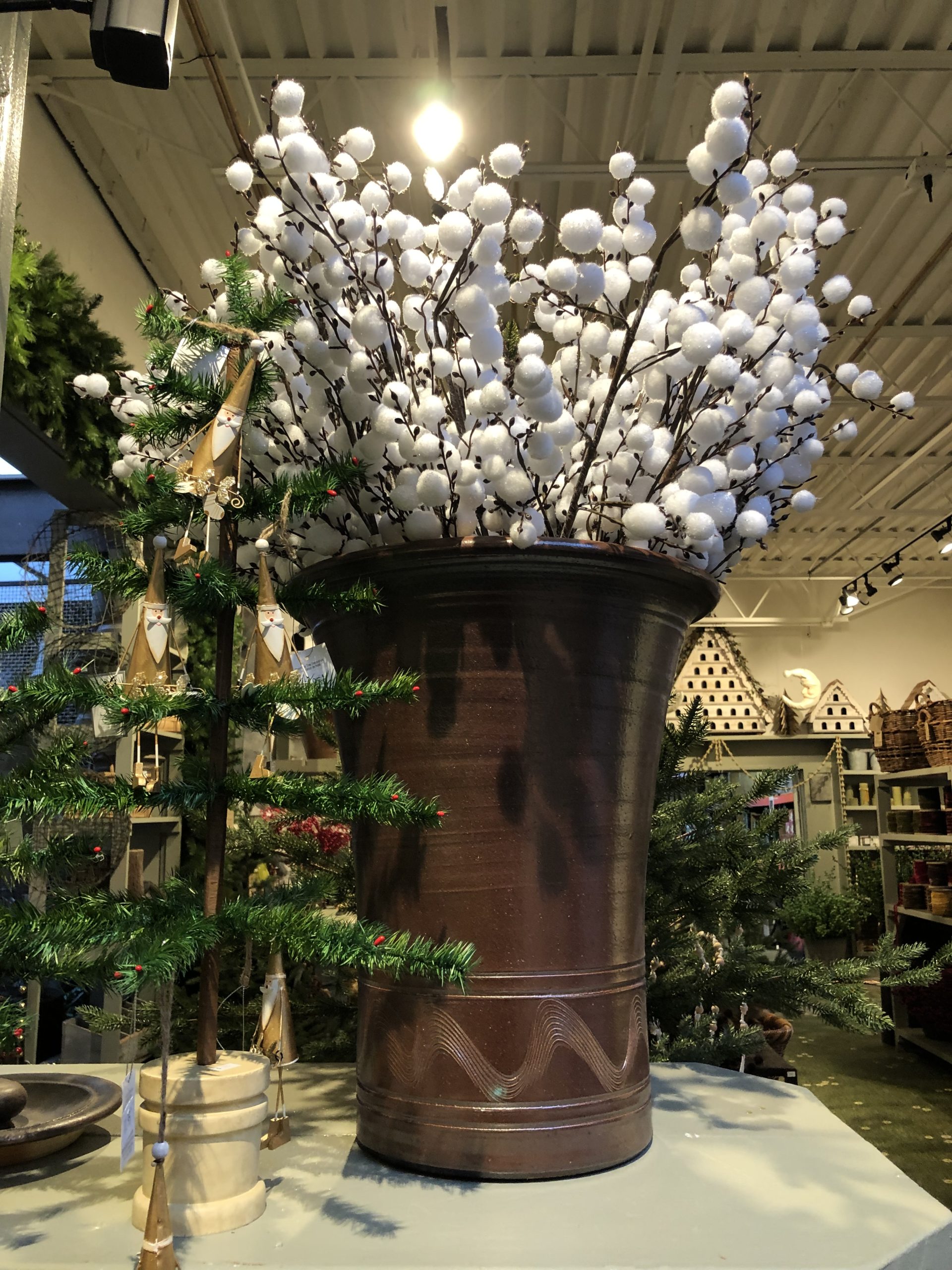
Snowball picks on chocolate seeded stems

frosted red berry picks

brown and white picks
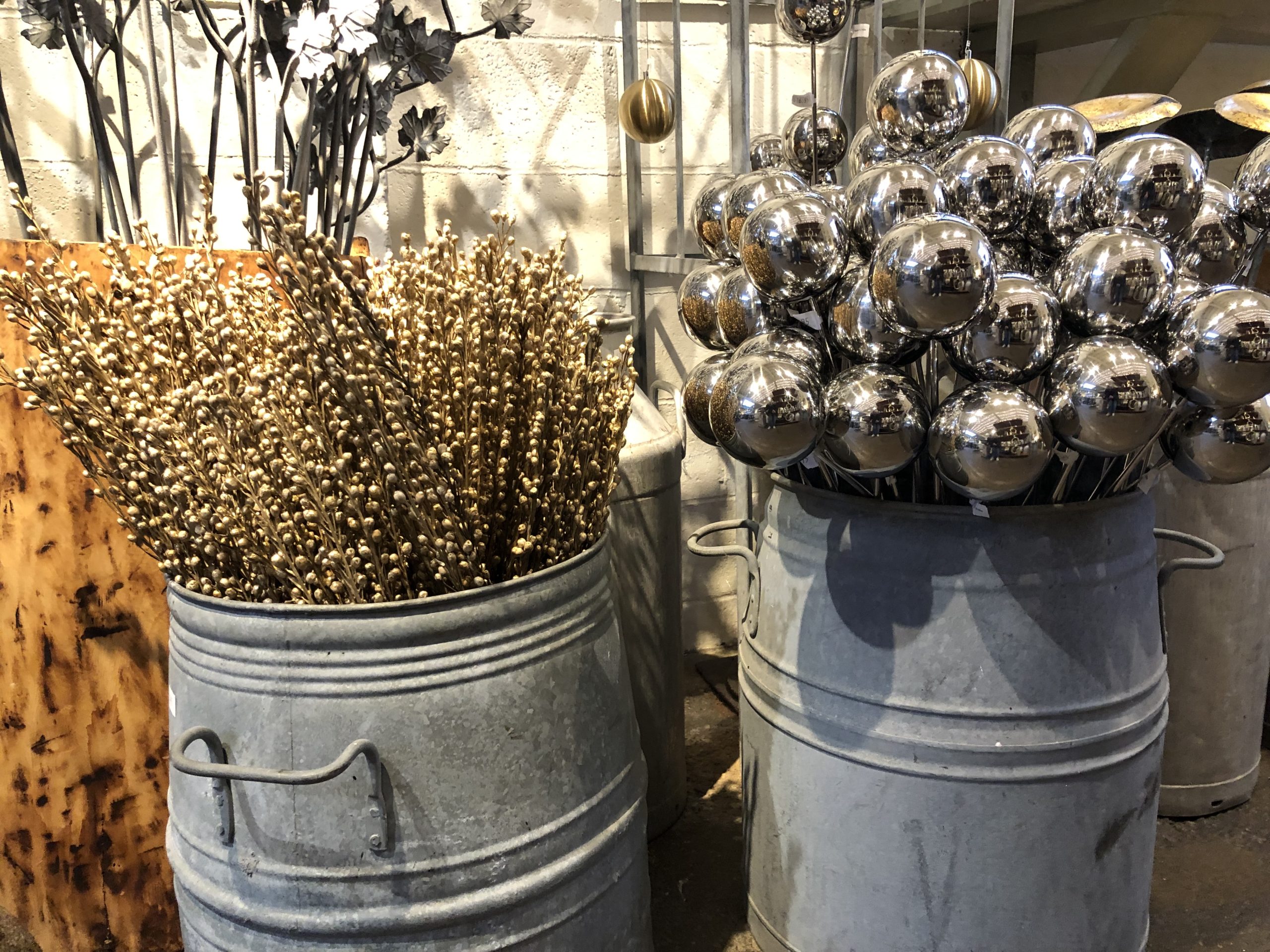
gold berry picks and stainless steel spheres on rods
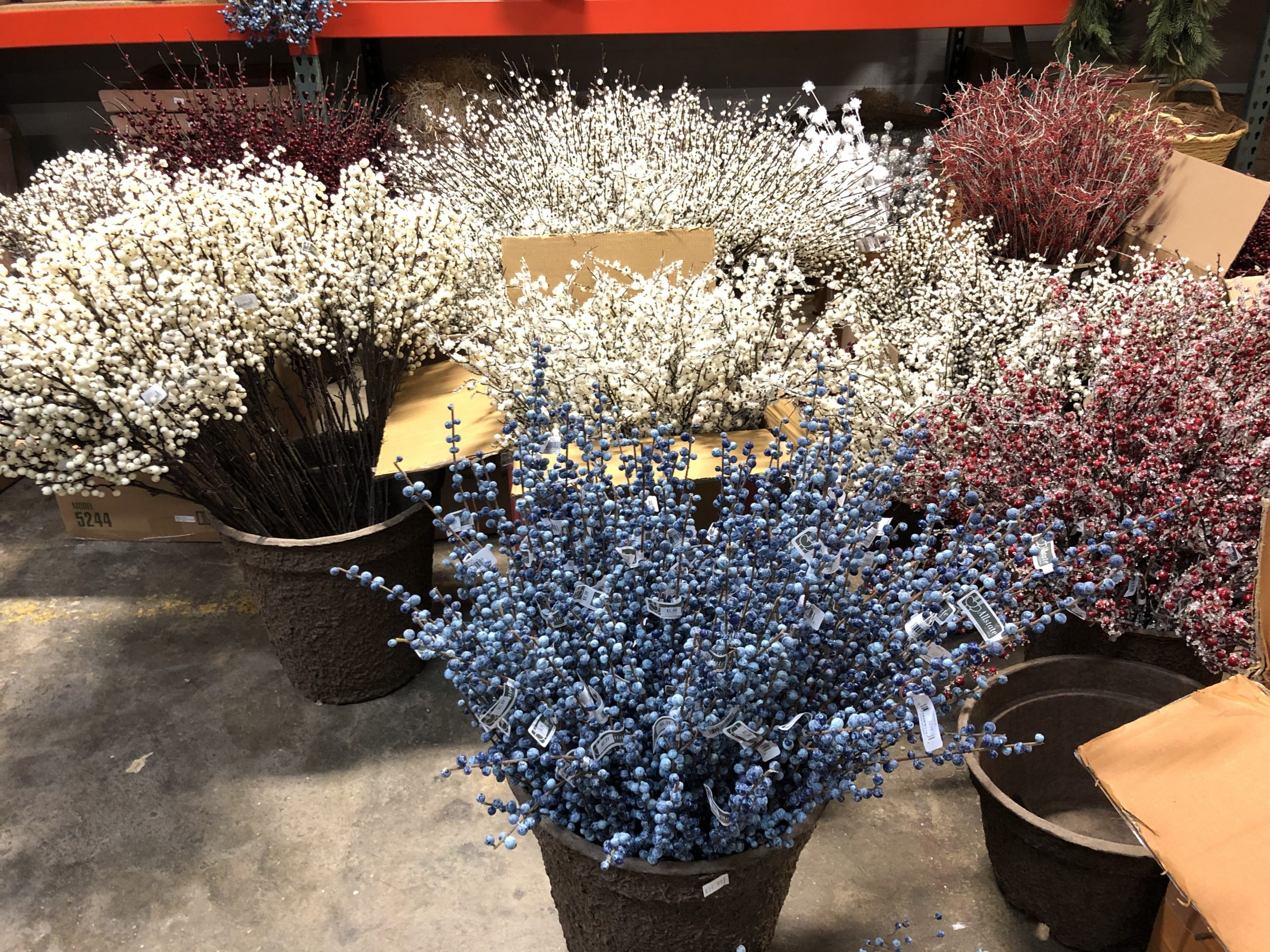
berry picks
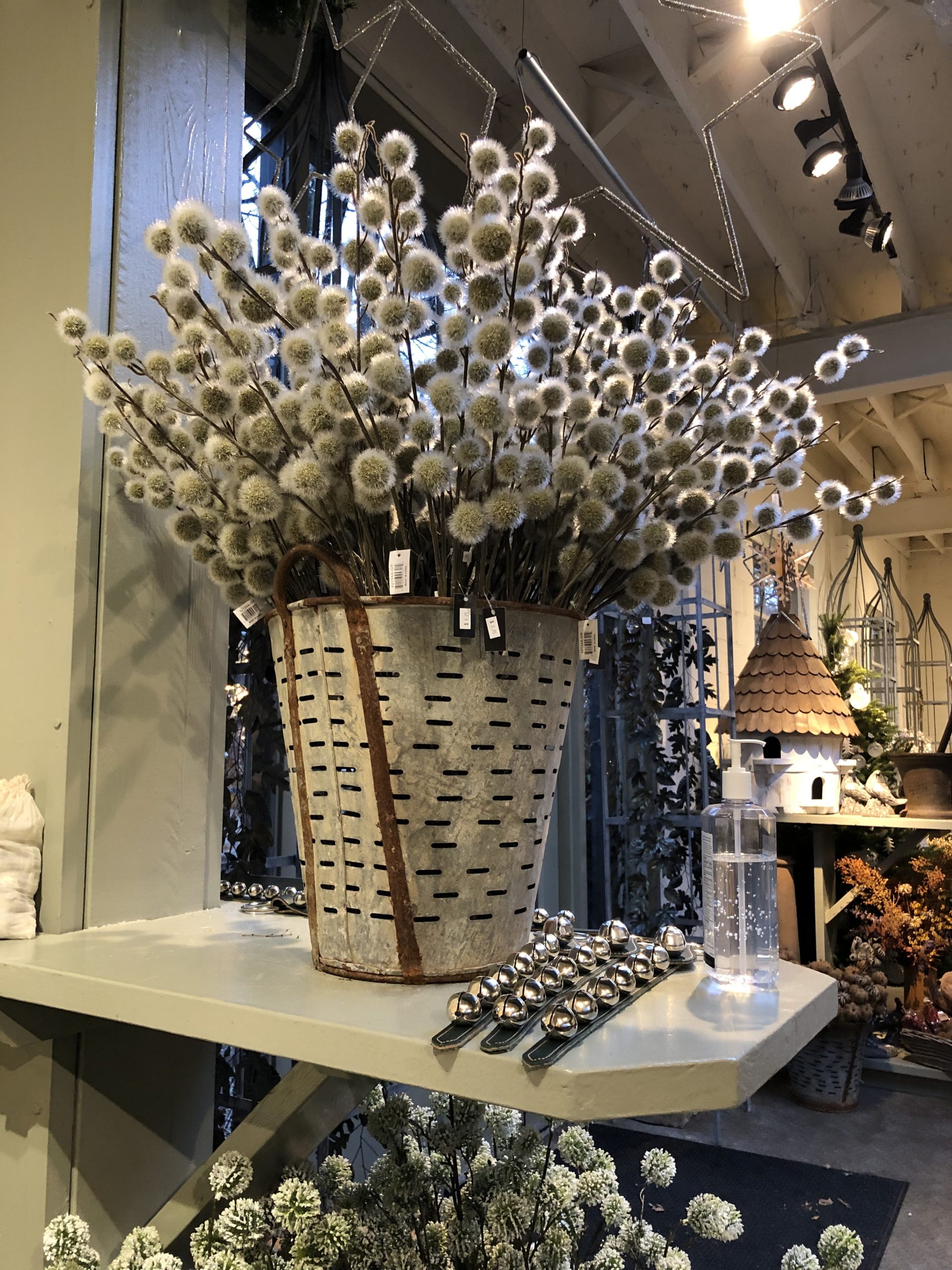
These pale green/gray fuzz ball picks have a distinctive glow when back lit.
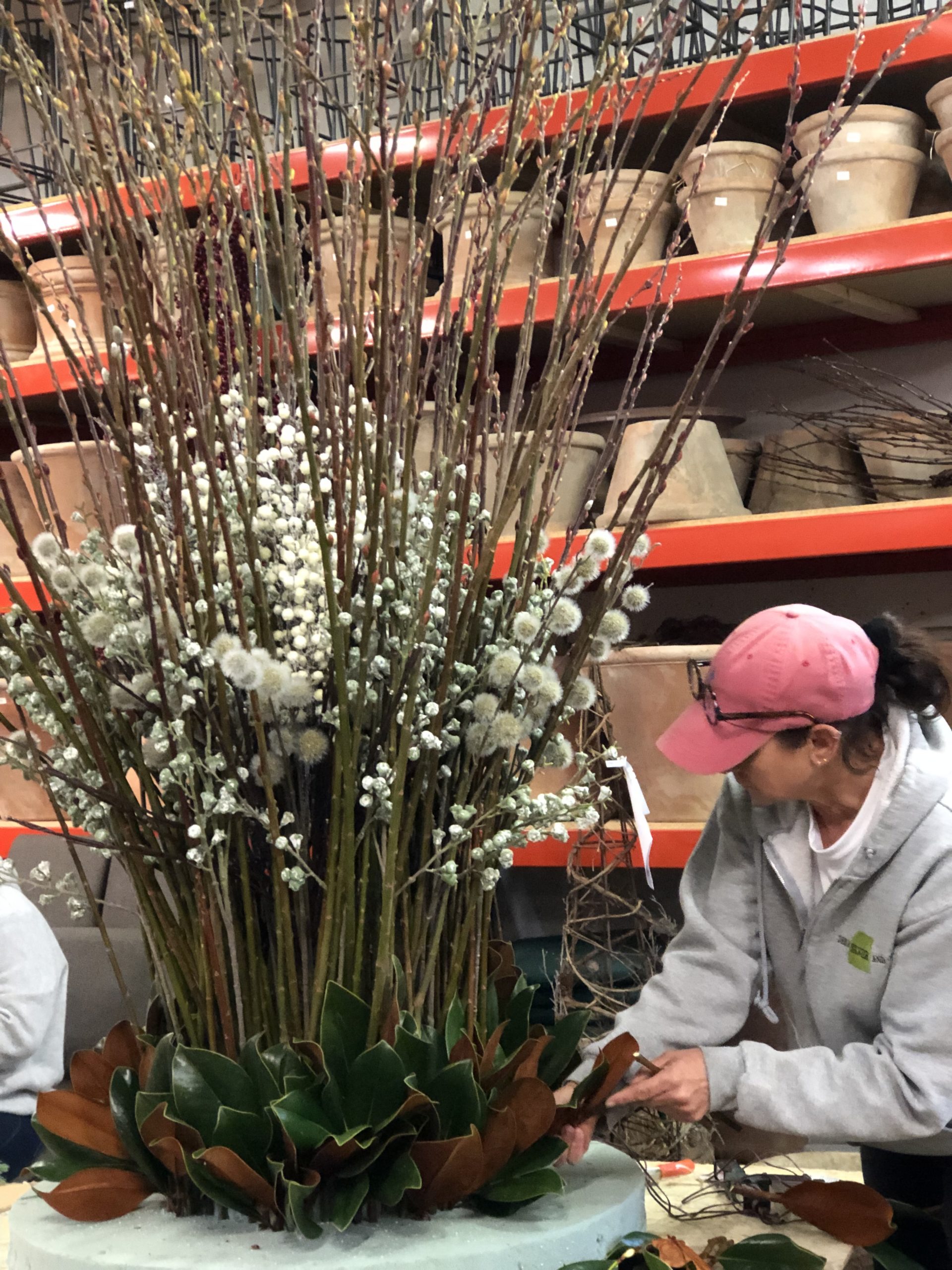
Paired with fresh cut branches and greens and lights, a winter container will please the eye and the spirit all winter long.
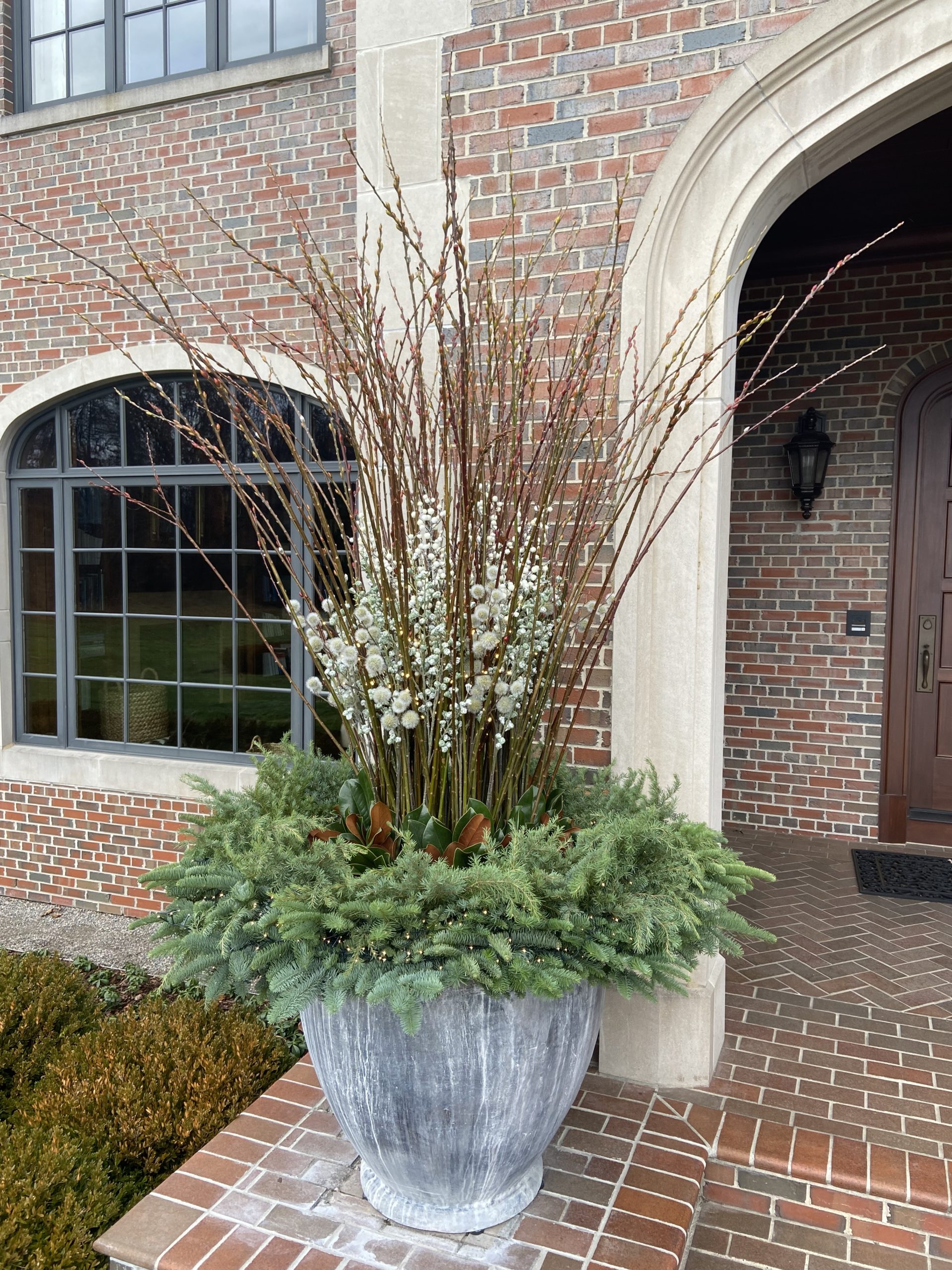
See what I mean?
